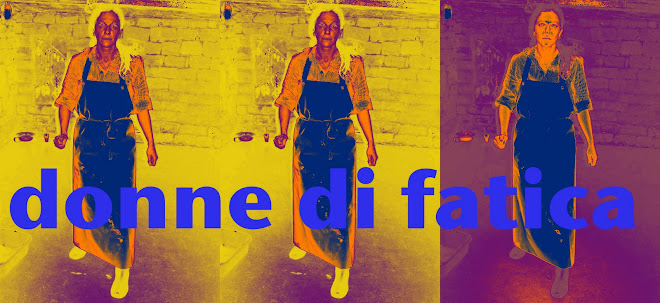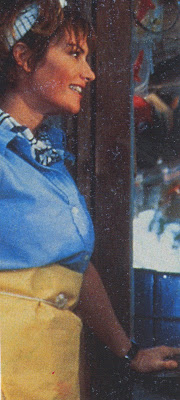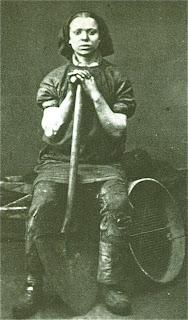
domenica 28 dicembre 2008
sabato 20 dicembre 2008
lunedì 8 dicembre 2008
lunedì 22 settembre 2008
venerdì 19 settembre 2008
domenica 7 settembre 2008
domenica 24 agosto 2008
giovedì 14 agosto 2008
mercoledì 13 agosto 2008
venerdì 18 luglio 2008
lunedì 7 luglio 2008
sabato 21 giugno 2008
lunedì 9 giugno 2008
martedì 27 maggio 2008
venerdì 25 aprile 2008
lunedì 14 aprile 2008
sabato 29 marzo 2008
mercoledì 26 marzo 2008
venerdì 21 marzo 2008
mercoledì 19 marzo 2008
domenica 16 marzo 2008
venerdì 14 marzo 2008
samsui

donne di fatica cinesi
Samsui women
By Thulaja, Naidu Ratnala written on 1999-04-17
National Library Board Singapore
Comments on article: InfopediaTalk
History
A local custom in the Sanshui community was women holding the responsibilities of both child-minder as well as bread-winner. Instead of being married into a life of hardship, a group of Samsui women opted for the freedom of singlehood and travelled to Nanyang or Singapore. This formed a pattern where the women from Shanshui chose the life of a spinster to travel to Singapore to seek their fortunes. About 200,000 Samsui women were believed to have come to Singapore between 1934 and 1938, and this continued until 1949 when emigration from China was declared illegal here.
Job scope
The Samsui women were a proud and independent lot. Prostitution, opium peddling and various vices were common with other women mired in poverty. However, Samsui women chose to be engaged in hard labour with little pay instead of being lured into vices even if they paid more. They found employment in tin mines, rubber estates, on construction sites and as amahs or "domestic servants". They were hired extensively at construction sites in the 1950s. They carried rocks, dug holes and conducted menial work that defied their small physical stature.
Description
They wore a red head dress which became their trademark feature. The red head dress was a square piece of blood-red cloth folded in a way that it sat like a fairly large rectangular roof on their heads. Their hair was combed into a bun or "pigtail" or towchang and tucked under the red cap. The towchang was a mark of their spinsterhood. They dressed in a stiffly starched black samfoo (sometimes spelt samfu), a tunic-and-trouser suit, protected by an apron. The sandals they wore were pieces of rubber cut out from used tyres and fashioned on their own with a strap.
Most lived in cramped shophouses in Chinatown on Upper Chin Chew Street, Upper Nanking Street and Eu Tong Sen Street. Awaking before dawn, they prepared their breakfast-cum-lunch before assembling with other Samsui women to go to work everyday. They were taken in lorries to construction sites or they walked to the place themselves. Their meals were sparse with cooked rice, some bean cheese and a bit of pickled or fresh vegetable everyday. This was usually followed with a cigarette of Chinese tobacco. After work they went home with a few pieces of wood to use for their cooking. In the evenings they would chit-chat with other Samsui women. This was their daily routine until they retired.
The Samsui women formed associations and sisterhoods to support each other, becoming a close knit and distinct community. Unfortunately, it also meant that they remained insular, associated with only their own kind, were wary of strangers and had a reputation of being fierce and aggressive. Their dialect is not unlike Cantonese, although some consider it Hakka, but it is spoken with a heavy accent that is difficult to pick up and is seldom understood by other Chinese.
Development
The Samsui women saved money for retirement and for trips back to China to visit relatives. They communicated with their families through letter writers and faithfully sent money back. Although some finally retired in China, many became too old to travel. With few family ties in China, the remnant stayed on with less than 100 Samsui women left in Singapore today. Most of them are in their 80s and 90s. They earn a living picking up cardboard and remain very poor. The Sam Sui Wai Kun Association is an one of the few association that looks into the needs of the Sam Sui women. They provided free travel for seven Samsui women in 1996 to see their hometown, relatives and pay respects to their ancestral graves in China for one last time before they died.
Author
Naidu Ratnala Thulaja
lunedì 10 marzo 2008
domenica 9 marzo 2008
Iscriviti a:
Post (Atom)
















































